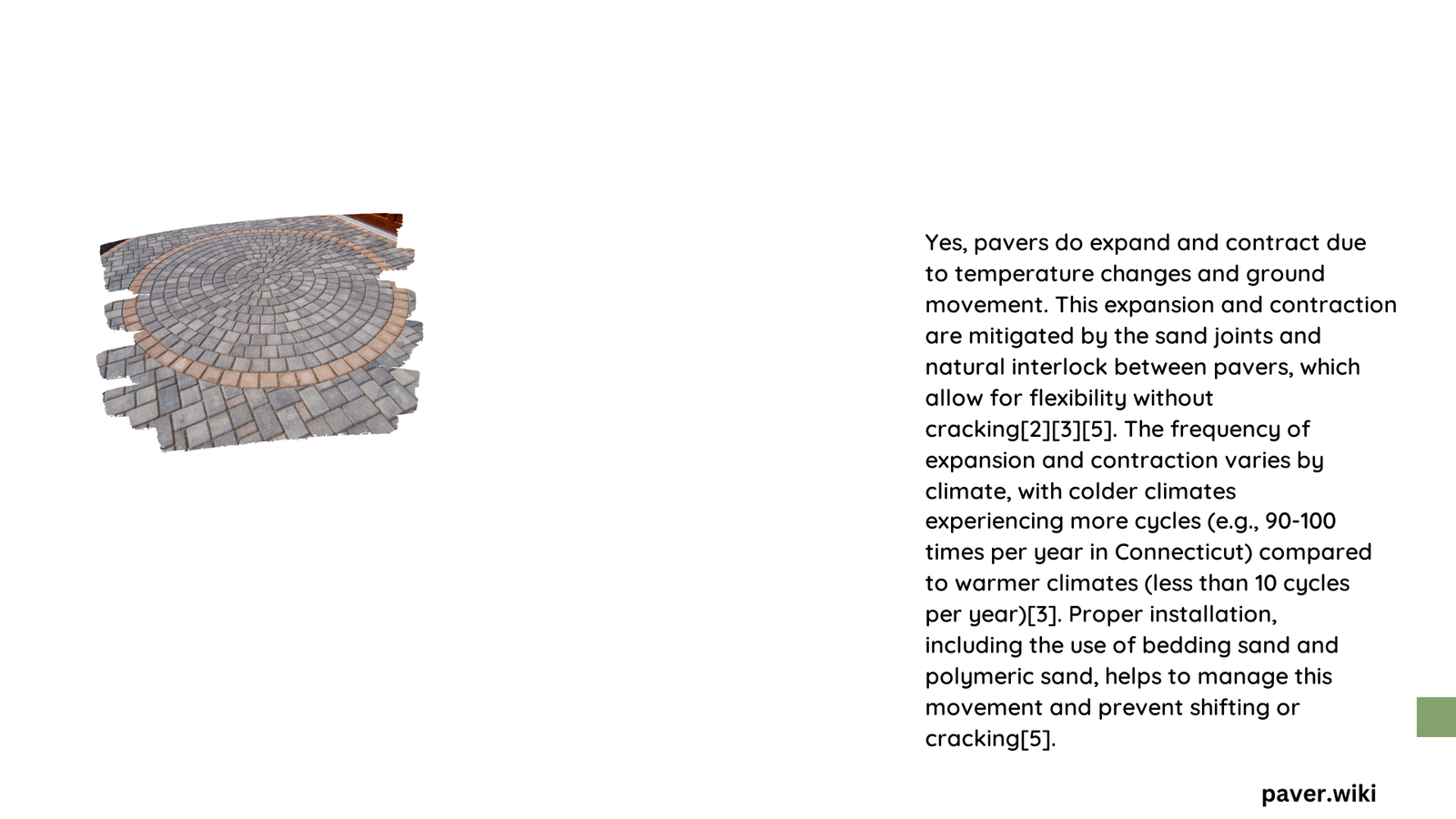Pavers undergo dynamic dimensional changes due to temperature fluctuations, experiencing measurable expansion and contraction. Understanding these thermal behaviors is crucial for designing durable, stable paving surfaces that can withstand environmental stress without compromising structural integrity. Precise engineering calculations and strategic installation techniques help manage these natural material responses effectively.
What Causes Pavers to Expand and Contract?
Thermal Physics of Paving Materials
Paving materials fundamentally respond to temperature variations through molecular-level movements. Different materials exhibit unique thermal expansion coefficients, which determine their dimensional changes:
| Material | Thermal Expansion Coefficient (per °C) |
|---|---|
| Concrete | 10 × 10^-6 |
| Brick | 3-5 × 10^-6 |
| Natural Stone | 4-7 × 10^-6 |
Key Factors Influencing Expansion
- Temperature Range: Wider temperature variations increase dimensional changes
- Material Composition: Different materials expand at different rates
- Paver Thickness: Thicker pavers experience more absolute dimensional change
How Much Do Pavers Actually Expand?
Calculating paver expansion requires a precise scientific formula:
[
\Delta L = L \times \alpha \times \Delta T
]
Where:
– (\Delta L) = Length change
– (L) = Original paver length
– (\alpha) = Thermal expansion coefficient
– (\Delta T) = Temperature difference
Example Calculation:
– Concrete paver length: 25 meters
– Temperature change: 10°C to 50°C
– Expansion: Approximately 1 cm
Why Are Expansion Joints Critical?
Expansion joints prevent structural damage by:
1. Absorbing thermal movement
2. Reducing stress on paving materials
3. Preventing cracking and buckling
4. Maintaining surface alignment
Strategic Paver Installation Techniques
Recommended Joint Spacing
- Concrete pavements: 20-30 feet (6-9 meters) apart
- Joint width: Minimum 2 cm
- Filler materials: Cork, specialized sealants
Practical Recommendations for Paver Installation
Best Practices:
– Install during moderate temperatures
– Use high-quality expansion joint materials
– Calculate expected thermal movement
– Allow sufficient joint space
– Consider local climate variations
Professional Insights
Professional landscapers and engineers emphasize that understanding thermal dynamics is more complex than simple measurement. Factors like:
– Solar radiation
– Ground temperature
– Material density
– Installation technique
All contribute to how pavers respond to temperature changes.
Potential Risks of Ignoring Thermal Movement
Consequences of Inadequate Expansion Planning:
– Surface cracking
– Uneven paver alignment
– Structural weakness
– Premature material failure
– Increased maintenance costs
Conclusion

Paver expansion and contraction are natural, predictable phenomena governed by precise scientific principles. Proper understanding and strategic planning can mitigate potential issues, ensuring long-lasting, aesthetically pleasing paving surfaces.
